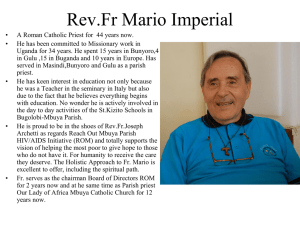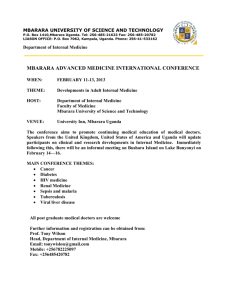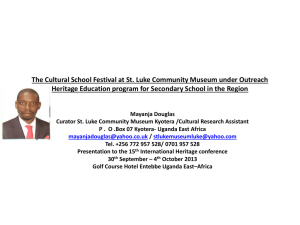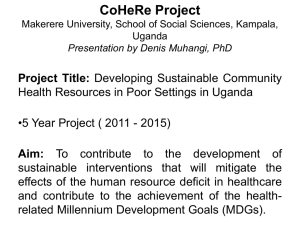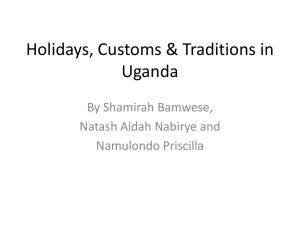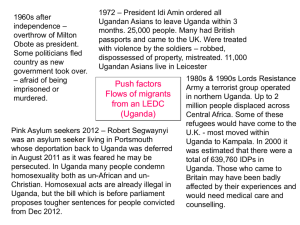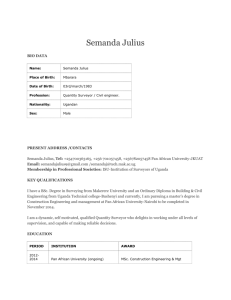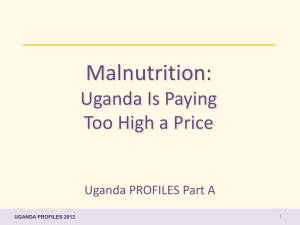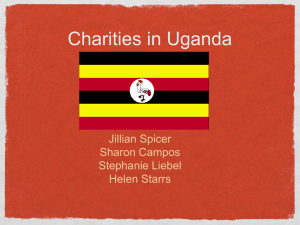IGONGO CULTURAL CENTER - Cross Cultural Foundation
advertisement
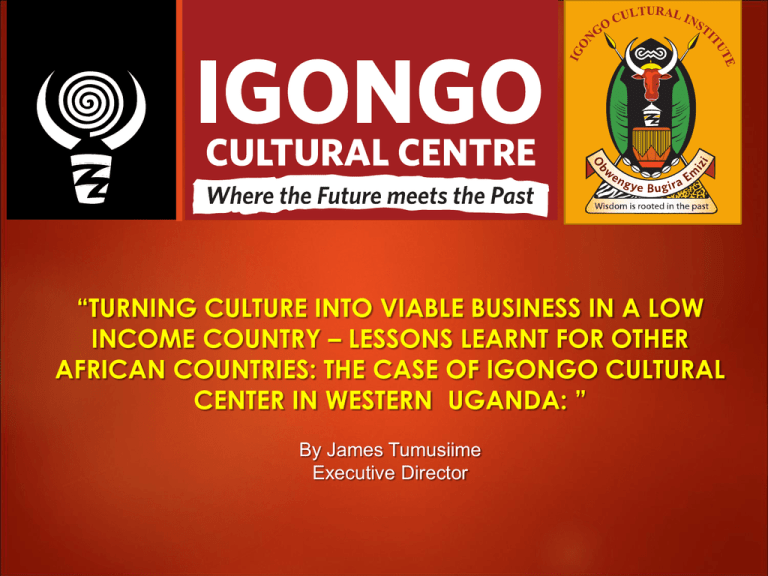
“TURNING CULTURE INTO VIABLE BUSINESS IN A LOW INCOME COUNTRY – LESSONS LEARNT FOR OTHER AFRICAN COUNTRIES: THE CASE OF IGONGO CULTURAL CENTER IN WESTERN UGANDA: ” By James Tumusiime Executive Director Background In Africa like in many parts of the world, governments were always responsible for safeguarding and preserving all aspects of national heritage. Many of these governments inherited this responsibility from the colonial authorities. Most of them preserved heritage by maintaining and building museums and other memory sites they had inherited, and some times set up others like theatres, cultural centers, and libraries. Post Independence Priorities Due to population pressure priorities changed, forcing governments to shift funding to education, health, water, electricity and infrastructure. As a result, heritage sites were neglected. The sorry state of these centers became a source of concern to those who loved culture and heritage. Igongo Cultural Centre was conceived to complement government efforts in conserving the country’s heritage, concentrating on southwestern Uganda. The Cultural Centre comprises: a museum, a cultural village, an artistic recreation of a palace of a famous warrior queen a craft and book centre a restaurant specialising in local foods a 4-star hotel. a museum a cultural village an artistic recreation of a palace of a famous warrior queen a craft and book centre restaurant specialising in local foods a 4-star hotel Setting up the Centre A Council of Advisors was set up in 2008 compring: academicians lovers and promoters of culture book authors in the history and heritage of the area local language experts and teachers. Fountain Publishers. Institutions of learning consulted were: Makerere University Mbarara University of Science and Technology Uganda museum National Library of Uganda. Setting up the Centre cont. Artists mainly from Margret Trowell School of Industrial and Fine Art included: Painters and sculptors, museologists Technicians Music instructors. Corporate sponsors: Bank of Uganda, Housing Finance Bank National Housing Corporation Uganda Breweries The New Vision. Site Selection for the Centre The museum was constructed at a place called Biharwe in Mbarara District. The place is famous for: being the benchmark for computing dates of the dynasties of the ancient kingdoms in the interlucustrine region, basing on the Eclipse in this place in 1520. At this time and place, there was a major war between two great neighbouring kingdoms of Bunyoro and Nkore in a cattle raid. The eclipse of the sun which Bunyoro fighters mistook to be hell sent to them by Nkore, forced them to abandon all the raided cattle, running for their lives. Site Selection Cont. Biharwe also hosted the palace of the great King Rugamba Ntare III of Nkore kingdom, in the 17th century in whose reign Nkore kingdom experienced heavy and destructive rains. King Rugamba NtareIII invited diviners and supplicated with a white cow and sheep to stop the rain on one of the surrounding hills. The rain stopped and the water runoffs collected in Mburo basin forming the present day great Lake Mburo. The lake is a prominent feature to date, with a National Park named after it which hosts diverse and unique biodiversity. Business strategy of Igongo Cultural Centre The fees charged to enter the museum are kept low to allow many people to visit it, low return on investment. a restaurant, crafts and book centre, leisure gardens and now a 4-star hotel are intended to subsidize the museum. To conserve and promote culture, its activities and products must be turned into commercial products. Community Benefits Currently, the centre employs over seventy people on a full time basis. Over 70% of these employees come from the communities whose culture is showcased at the centre. The centre indirectly employs over one hundred people as suppliers of: handcrafts food products raw materials trainers of trainers in traditional performances major stopover for tourists and other travelers not-for profit arm of the centre – Igongo Cultural Institute is a partner with other stakeholders and players in culture and heritage in the countr. Community Benefits Cont. The centre is now the biggest market in the area for: wedding gifts local farm products like ghee, milk, honey, matoke, bananas, chicken, and beef. traditional arts and performances. Igongo Partner Organisations. Igongo works with different partners to curry out its programs in conservation, education and business. Our partner organisations include among others: Uganda Wildlife Authority (UWA) Ankole Cow Conservation Association (ACCA) Fauna and Flora International (FFI). Cross Cultural Foundation of Uganda (ccfu) United States Agency for International Development (USAID) African Wildlife Foundation (AWF) Uganda Community Tourism Association (UCOTA) Uganda Community Museums Association (UCOMA) The centre has further established strategic linkages on a winwin basis with other relevant institutions and individuals such as: Universities like Mbarara University of Science and Technology (department of Indigenous knowledge), and Makerere University, Uganda Museum, Uganda Tourism Board, Ministry of Culture, Ministry of Education, plus individual schools and scholars. Conclusion From this model and business strategy, it is clear that culture is a resource that can be tapped to: improve the welfare of the people bring returns to investors and supplement government’s development efforts. Culture can greatly contribute to social transformation of a community. The gap left by government in adding value to culture can therefore be filled by the private sector through efficient resource allocation, prioritization, sound management, proper operations and effective marketing. End


